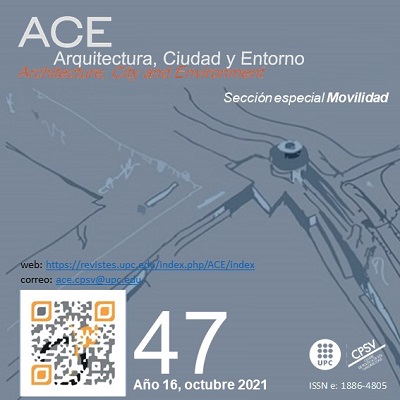Which Mobility Variables are Related to Urban Poverty? The Case of Santiago de Chile and Quito
DOI:
https://doi.org/10.5821/ace.16.47.9510Keywords:
Urban economy, residential segregation, access, distanceAbstract
The Latin American urban poverty constitutes an example of residential segregation. Recent qualitative and quantitative studies on mobility and employment have found a positive relation between distance to work and unemployment. The study of mobility can offer fundamental tools for urban planning that, if are considered, would reduce exclusion, the still great challenge. This research takes the cities of Santiago de Chile and Quito as references for their similarity and availability of data to analyze, by neighborhood, the mobility variables to get to work that are related to poverty. The mobility variables measured in this research are the distance from each neighborhood to the economic and financial center of the city, the cost of transportation to arrive and the density of public transport in each neighborhood per person. The applied cross-section multiple regression model shows that all variables are related to poverty, but the cost is the one with the greater relationship. These findings provide evidence that the neighborhood in which a person resides is associated with his or here level of poverty.
Downloads
Published
Issue
Section
License
| INTELECTUAL PROTECTION CRITERIA |
At this moment, it is count with the "Oficina Española de Patentes y Marcas", while global protection it is being processed by the World Intelectual Property Organization (OMPI/WIPO). Nevertheless the International Standard Serial Number Office (ISSN) has given the following numbers ISSN: 1886-4805 (electronic version) and 1887-7052 (paper version). All articles will be peer reviewed, using double blind reviewing. |
| COPYRIGHT |
The article contents and their comments are authors exclusive liability, and do not reflect necessarily the journal editor commitee's opinion. All ACE published works are subject to the following licence CC BY-NC-ND 3.0 ES http://creativecommons.org/licenses/by-nc-nd/3.0/es/ It implies that authors do not hold nor retain the copyright without restrictions but only those included in the licence. |


































